Someone Driving Us For A Change
The last full day we spent in the south of France was in Avignon, where Kelly already filled everyone in on our hotel. When planning the trip, I had originally considered staying in Avignon for a few days, as it has some sights of its own, and would be a good base for us to do day trips from. In the end, I think we’re glad that we instead used those days in Gordes, but Avignon still ended up figuring into the plans, as it was the best place in the area to base out of for wine trips to somewhere I was eager to get to: Chateauneuf-du-Pape. The wines from this area are amongst my favorite, and Kelly became a fan of them after I introduced her to them years ago. For the unfamiliar, CdP wines are generally blends (they make reds and whites; no rosé), with the red (what I am a fan of) being able to be made up of up to 13 grapes. While there are 13 allowable grapes, nearly all red CdP wines tend to be the classic grenache-syrah-mouvedre blend, often tossing in cinsault as a fourth grape. The blend ratios vary from producer to producer, even within the producer’s line and from year to year.
Much of the research I did before the trip turned up comments talking about how doing tastings in the area was not like we’d have done in Napa/Sonoma, and that many of the operations are family run and do not have dedicated or heavily built out tasting rooms or areas…that it might even be the owner (who may also be the farmer and winemaker) who would have to greet you, and some of them would view that as kind of a hassle and taking time away from ‘actual work’. Several other posters proactively commented about the French being really stringent with alcohol levels and driving as well..so I decided the best way to solve the problem would be to hire a guide: someone to drive us who would already know where to take us and have contacts. Several of the guides I found when searching in the area seemed to base out of Avignon, which is why I left one day in Avignon on the itinerary. Group tours are possible, in half or full day varieties..but I booked a full day private, giving us the best chance of covering as much ground as possible and able to tailor it as much as possible. Our guide was Romain Gouvernet, and he ended up fitting the bill wonderfully.
We drove from Gordes to Avignon early the morning of the 20th (about a 45 minute drive) and reached our Avignon hotel around 9, letting us leave our bags with the hotel all day. Romain picked us up at the Avignon hotel, and we were off! Chateauneuf-du-Pape is not too far north of Avignon; the drive was only probably 30 minutes to our first stop. Romain told us more about himself on the drive (he grew up in Avignon but has lived in Chateauneuf-du-Pape for the last few years, with earlier time spent in Ireland and Paris, and has a level 3 sommelier certification from WSET) and asked us some questions to try to see what sort of wine we most liked. The line of questioning with me turned out to be pretty funny, as I hadn’t realized how lucky I’d been in the past. It was sort of like this:
Romain: “Do you recall what wine you’ve had in the past you think was the best you’ve had?”
Me: “I’m not positive. That’s hard. I think there is a good chance it was a Chateauneuf-du-Pape that Kelly and I opened probably 2 or so years ago. A Chateau Rayas.”
Romain: “Chateau Rayas? You said it was a Rayas?”
Me: “Yes, for sure. Chateau Rayas.”
Romain: “Rayas is one of the two legends here. How did you even get a bottle? The production is not great.”
Me: “I bought it at a now-defunct shop in Austin in the early early 2000s.”
Romain: “What year was it?”
Me: “A 1998, I’m pretty sure.”
Romain: “Are you serious? 1998 is considered perhaps the greatest Cheatuneuf vintage of the past century. It must have been incredible. I still am amazed you were even able to find it. It is very hard to find Rayas here. There are a few restaurants that carry it, and they are very careful to not do anything to make the owner of Rayas cross, as they are afraid of losing access to it.”
He then told us how one of his best friends — another sommelier – had not yet had any Rayas, but was dying to, and so they had gone to a restaurant in town where Romain knew the restaurant’s sommelier and knew they carried it. After arriving, they tried to order a Rayas. Romain said the sommelier looked stressed, and explained to them that they should have told her ahead of time they wanted to order a Rayas, as the Rayas owner (Mr. Reynaud) absolutely insisted that any bottles of his wine that she served should be decanted for two days before being served. She did not want to break this rule and have him find out, and have him then cut off her supply. Romain’s friend is coming back to the area this summer to go back to the same restaurant expressly for the purpose of drinking the Rayas (with notice given this time)!
Anyway, it sounds like I totally lucked out by buying the 1998 Chateau Rayas reserve at Grapevine Market (R.I.P.) in Austin all those years ago! I thought it was fabulous, but I didn’t realize quite how good I had it.
Our first stop was not to a winery, but actually to a hill: Romain took us to a vineyard at the highest point in the Chateauneuf-du-Pape appellation. He said it was a good place to show us a few things: what the soil was like in the area and what the wind was like. He wasn’t kidding: that day was apparently windier than normal, but it was really windy…a constant and strong northerly wind on our day. As for the ground…see for yourself:

This part of the valley is covered entirely in these old river stones, dragged here by glacier movement. The rocks get hot during the day, and end up keeping the vines warmer as they dissipate heat I to the evening.
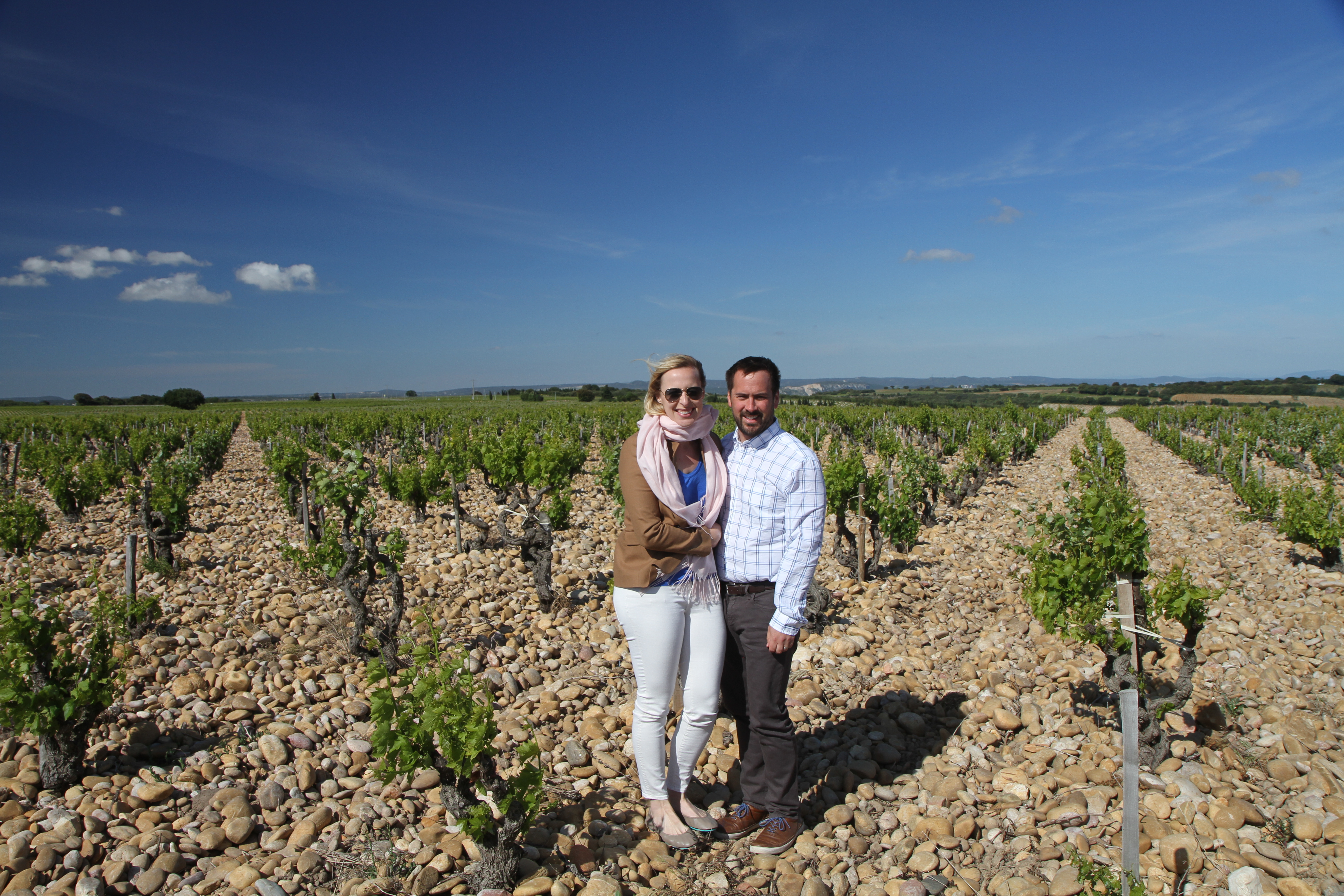
Some of the vines in this area are quite old, over 100 years. These old vines are thick and gnarly, much more beastly than anything I’d seen when touring vineyards in California.
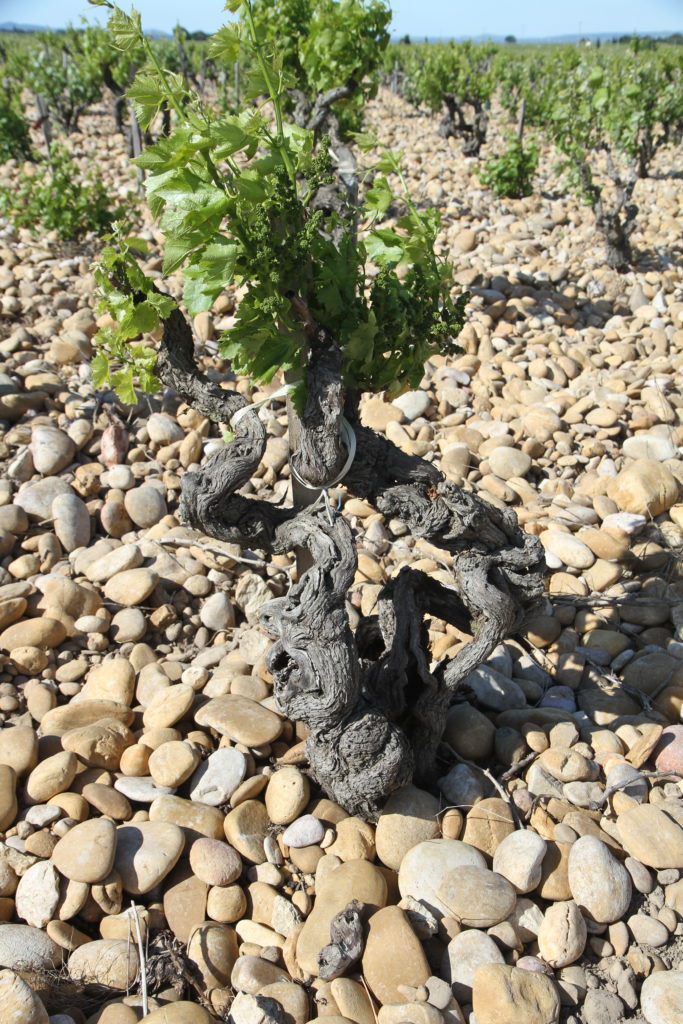
In CdP, they are forbidden from doing any irrigation (other than for new vines that aren’t yet being harvested), and are also forbidden from erecting support lines for vines, other than syrah. The goblet shaped pruning style they use here is meant to give the vines a thick base to support themselves and be able to stand up to the winds.
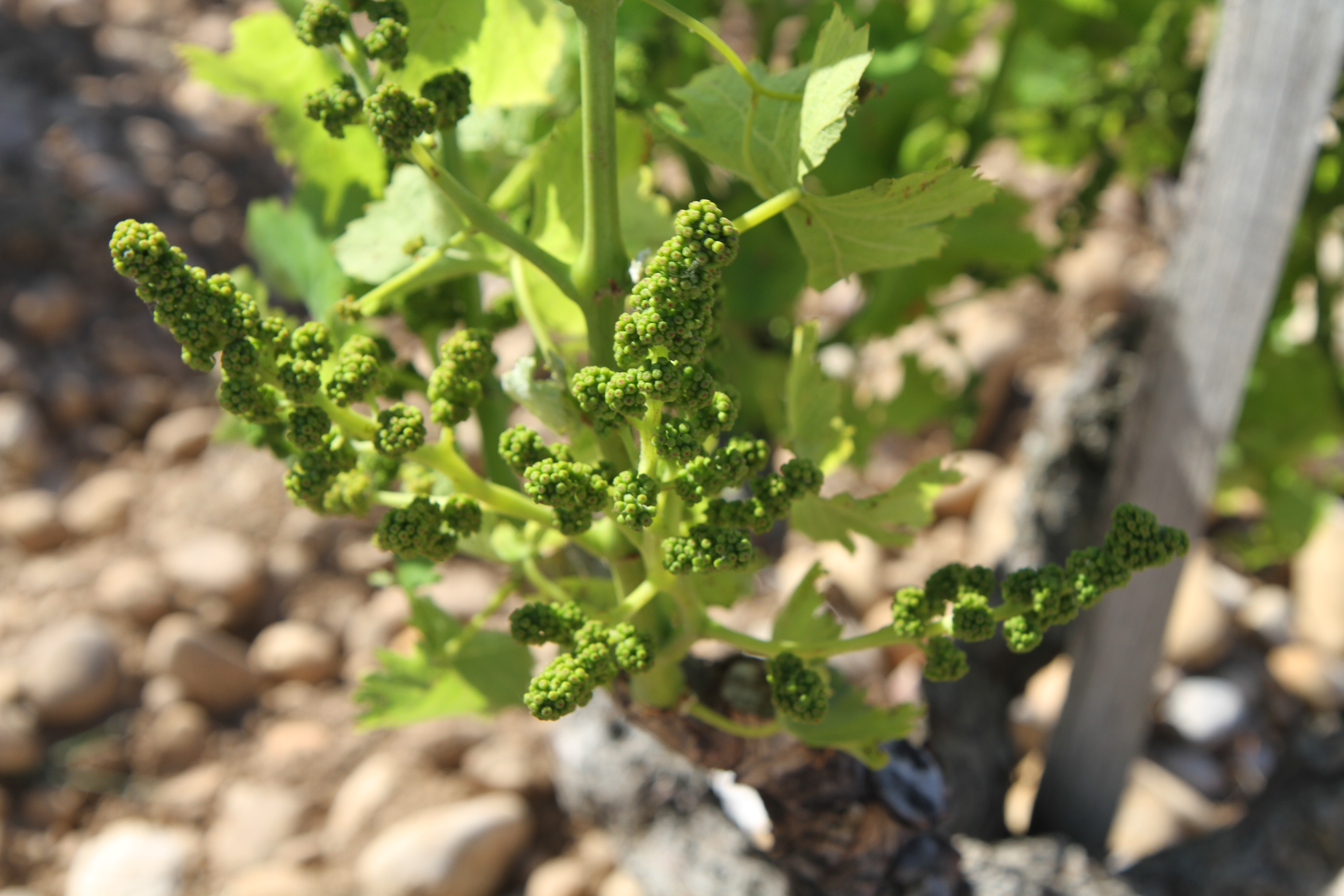
After seeing this initial overview of the growing conditions, we went to visit our first producer, Chateau Vandieu. I was definitely glad that we had a guide at this point, as I can’t imagine how I would have ended up at this property…there is no way that the TomTom would be much help on roads on the farm!
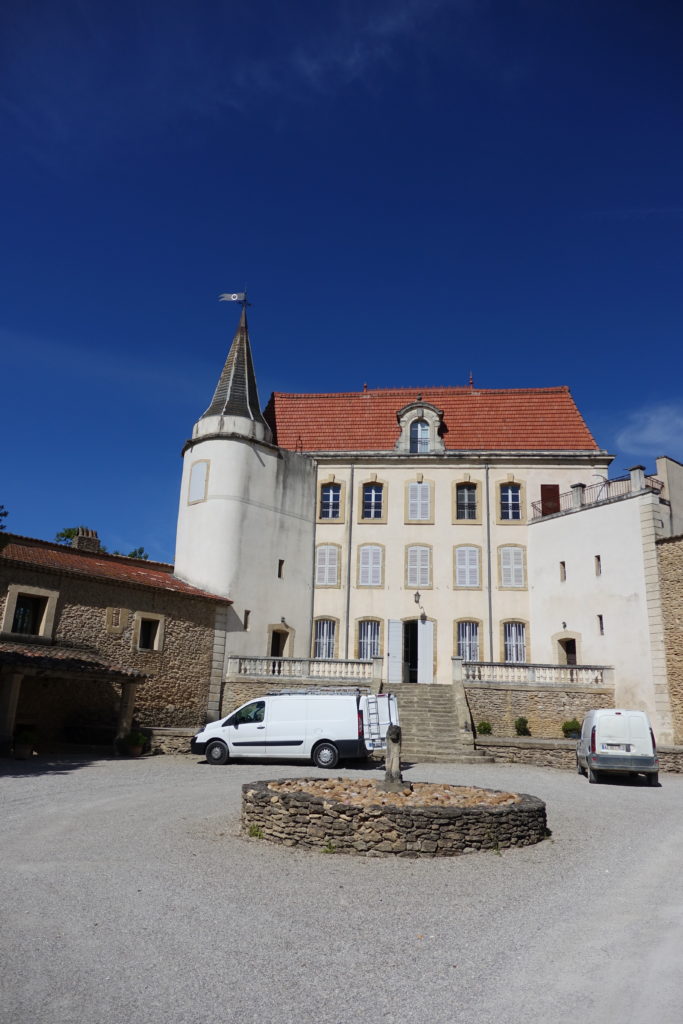
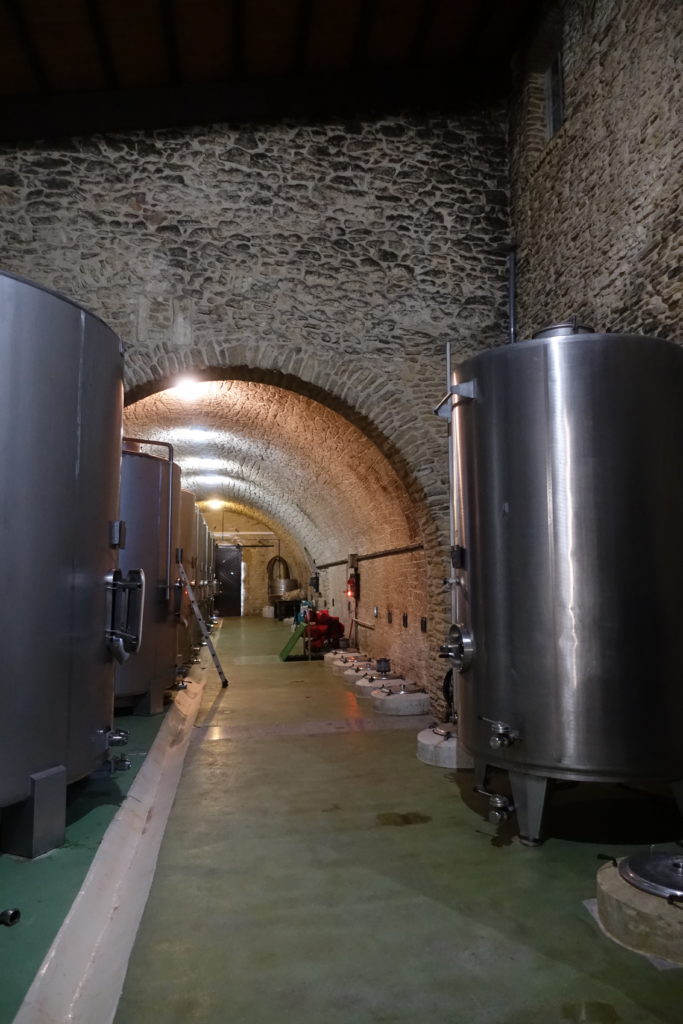
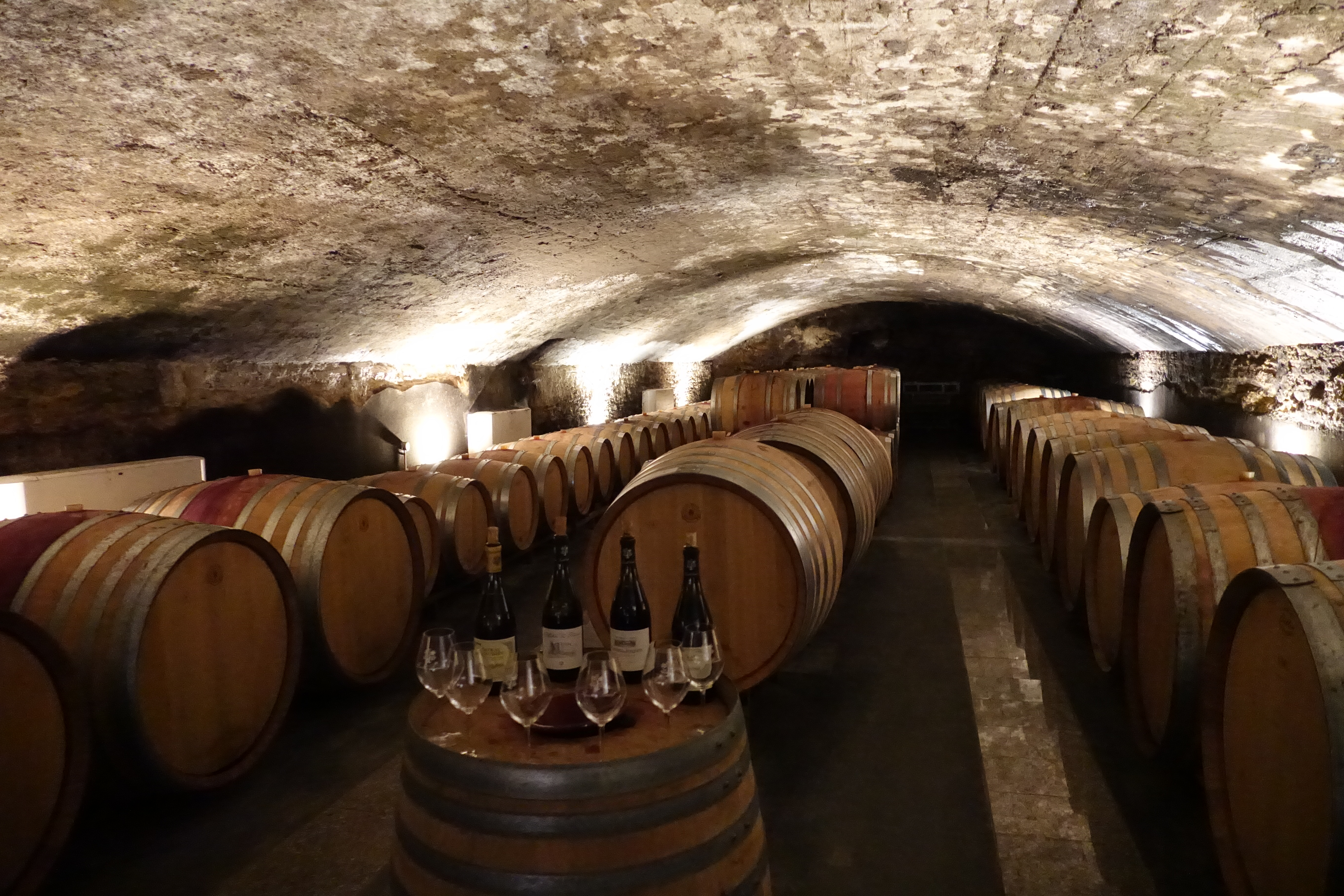
Then we were off to another producer in town, Domaine les Clefs d’Or. The winemaker (and 6th generation in the family to serve as winemaker) Jean Deydier was finishing up some work when we showed up. Whereas Romain characterized the first winery as ‘neoclassic’, he said that this one was totally old school CdP as far as its winemaking techniques. In particular, they made use of some huge aging barrels (more common historically in the area), as you’ll see here:
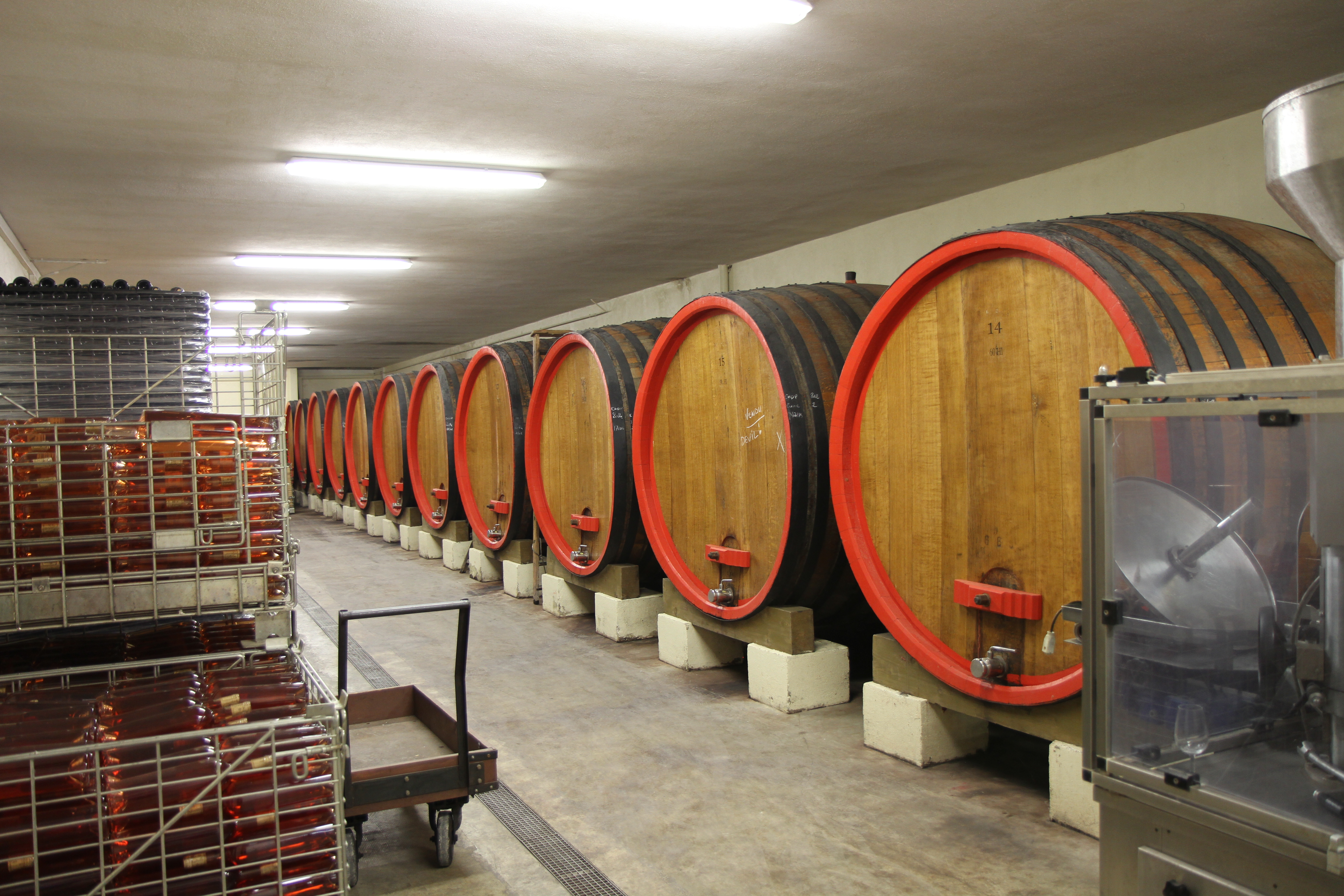
Romain climbed up on to one of these with a giant pipette (chemistry class flashbacks) to draw out a bit of the not yet finished wine, letting us taste the partially-done product:
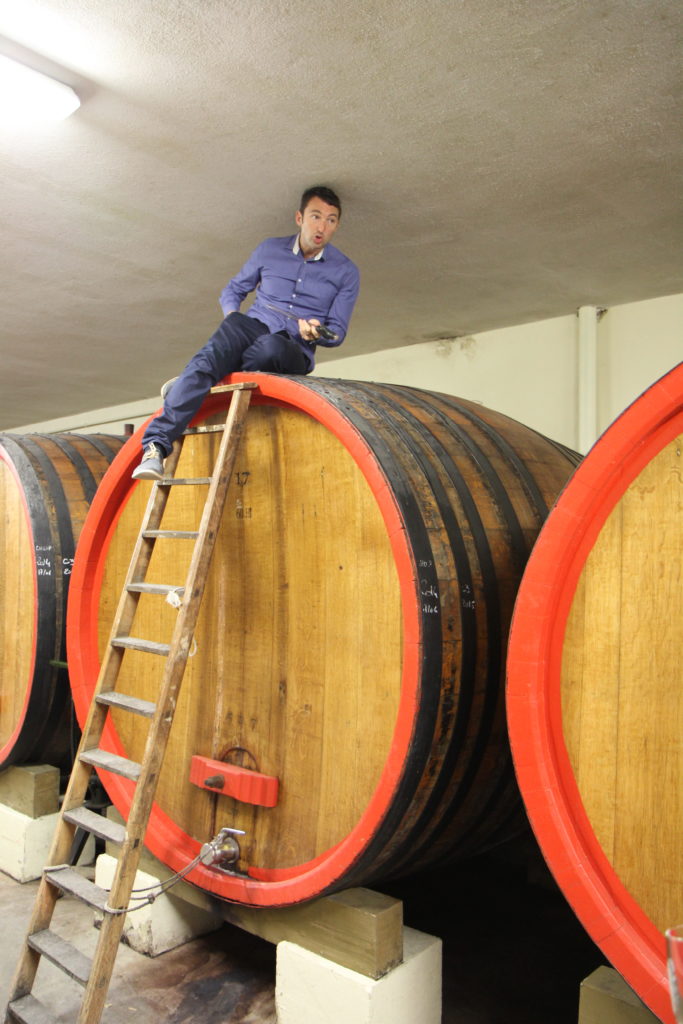
This winery was also interesting in that they produce some pretty different sorts of CdPs amongst their range. It was a good chance to taste how different the end result will taste from the winemaker’s blending choices.
We took a break in town to head up to the remains of the castle. The village gained its original notoriety from being chosen as the pope’s summer estate, when the popes had moved to Avignon from Rome for a number of years. Not much is left of the castle — partially age (and perhaps some action…I haven’t fully researched the history) but also due to being hit by some German bombs in WWII. From below, it looks a bit more intact than it is:

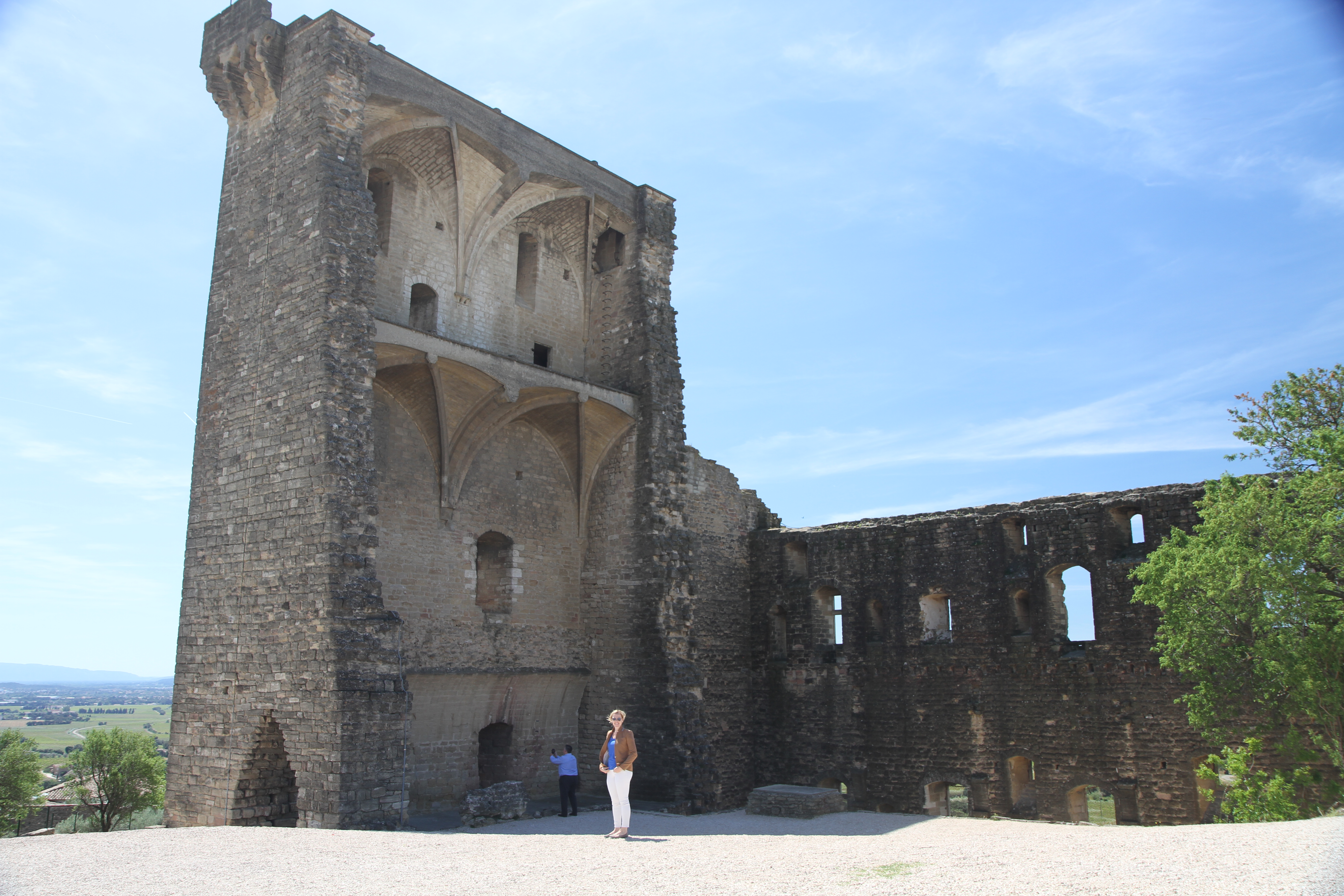
We were then brought by a pretty stellar looking estate (very castle-like in its own appearance, but not nearly so old…1800s) called Chateau des Fines Roches for lunch. The property is actually a hotel as well, but it seemed like a number of our fellow diners were also non-guests just there for lunch. After Romain collected us after lunch, he asked what we had. We told him about the prix fixe menu we’d each chosen, and I said I’d ordered a half bottle of Chateau La Nerthe (a prominent Chateauneuf-du-Pape vineyard) to go with it. He looked a bit surprised, and then I found out why: that was where we were on the way to visit. Funnier yet, Chateau La Nerthe was pretty much adjacent to Chateau des Fines Roches; I could have seen La Nerthe from where we ate lunch, if I knew where to look.
This turned out to be an extra special visit, as La Nerthe is one of the older properties in the area, and we were getting to tour the cellars (instead of just doing a tasting). It was a bit of a contrast: the tasting room is very clean and sort of modern, and seems pretty recently done…whereas the oldest parts of the cellars are very old: I believe they said 1500s.
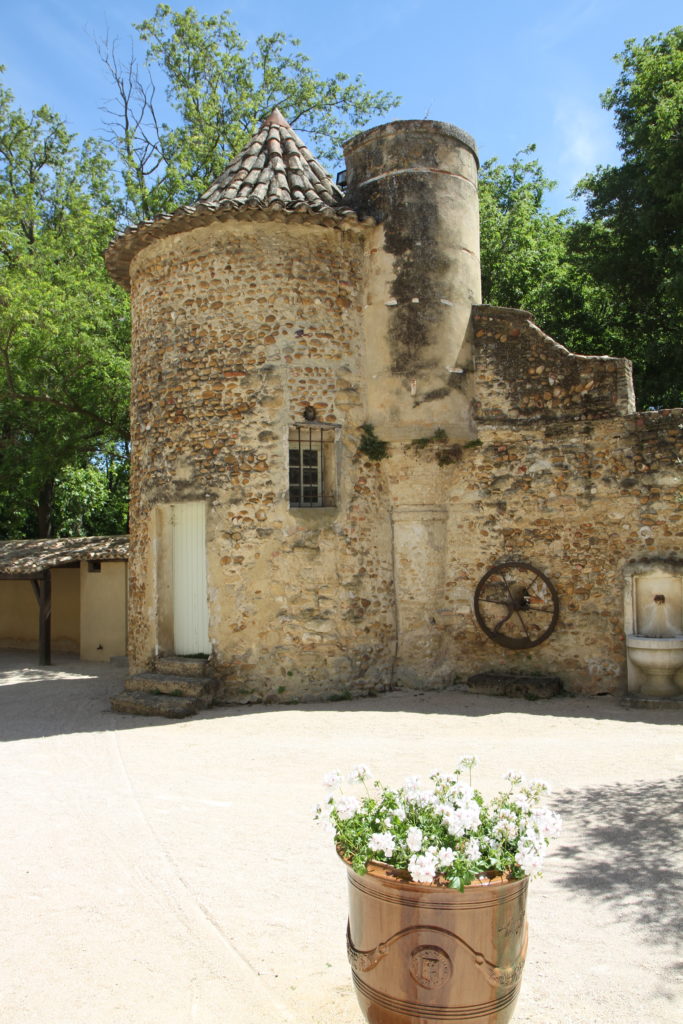
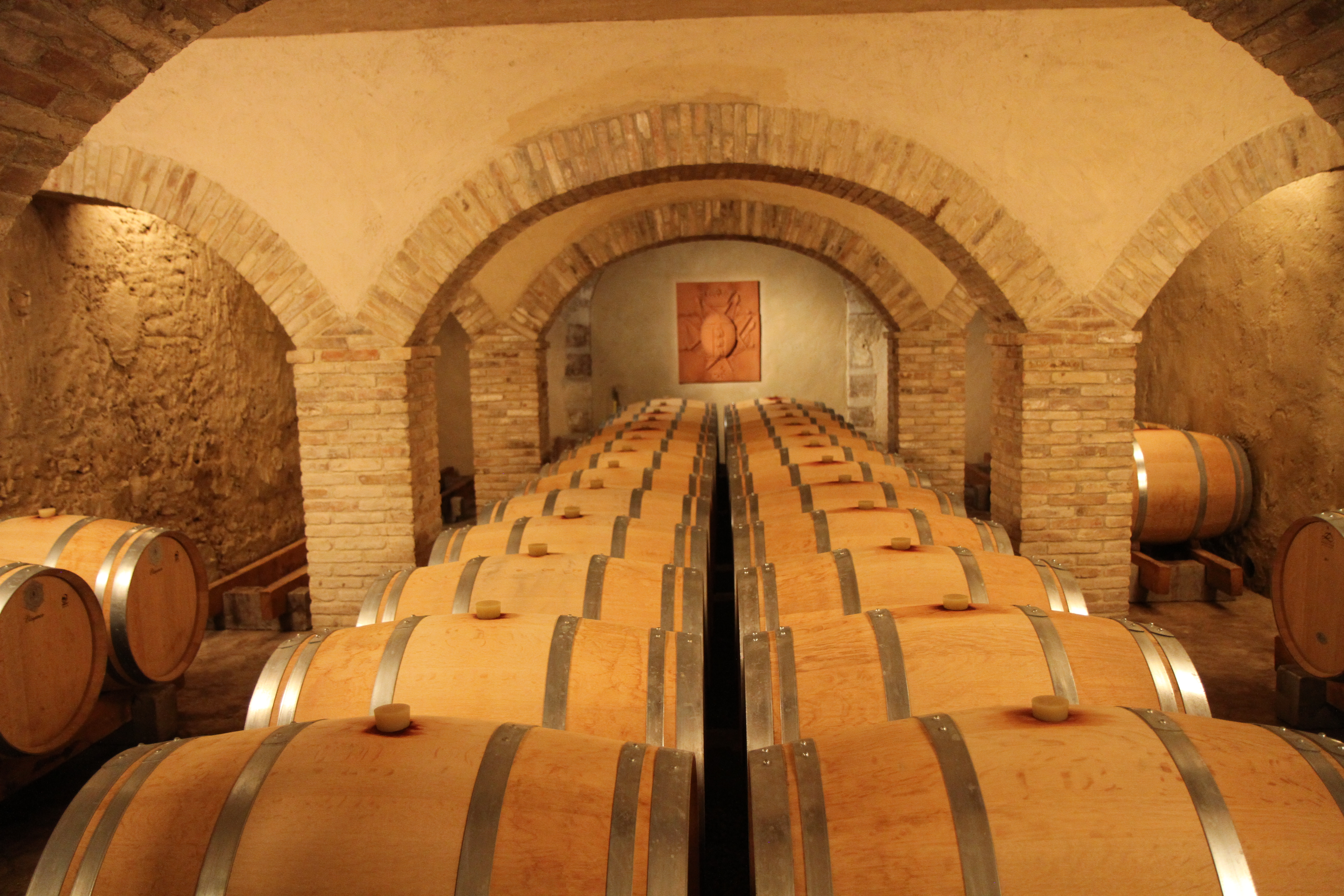
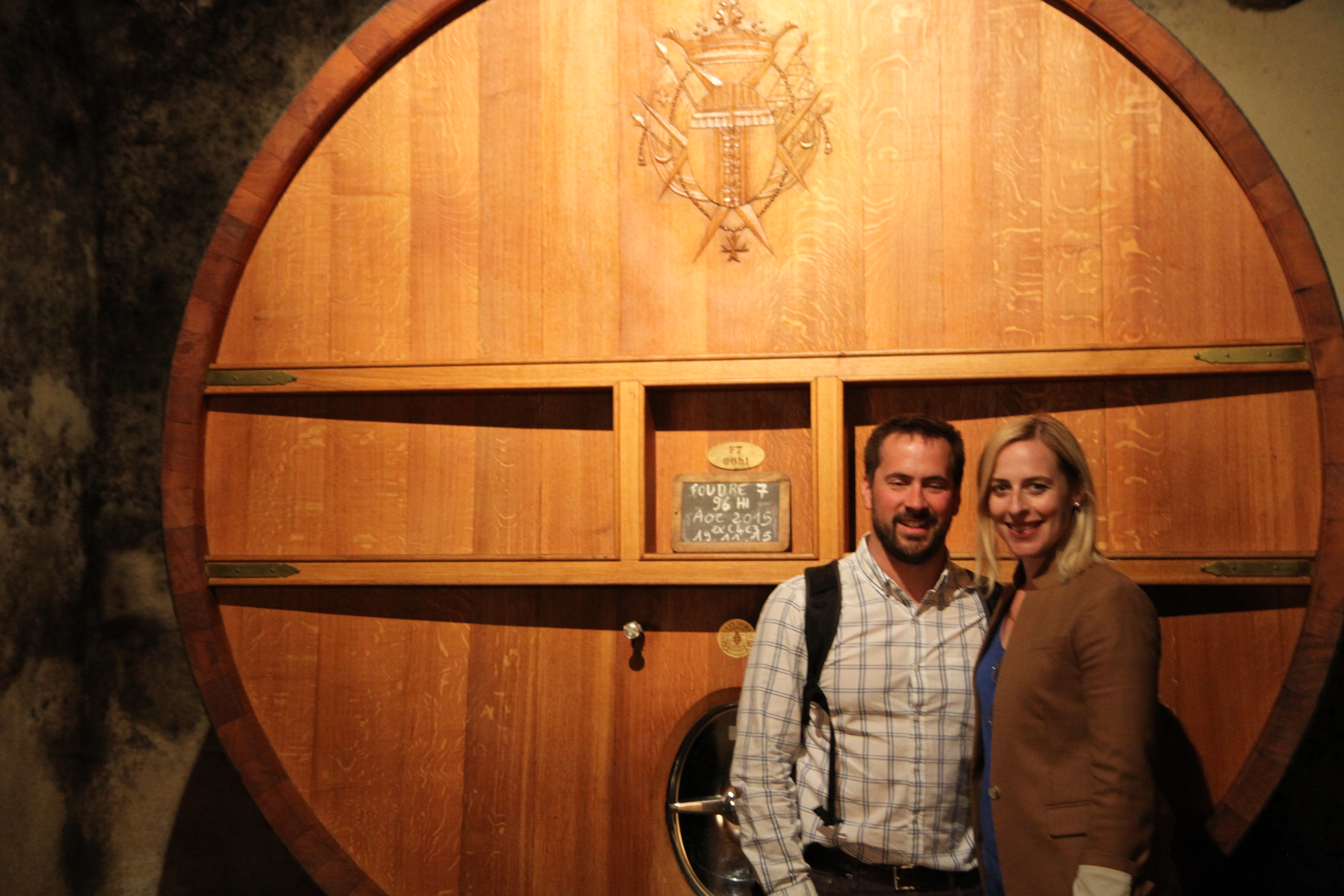
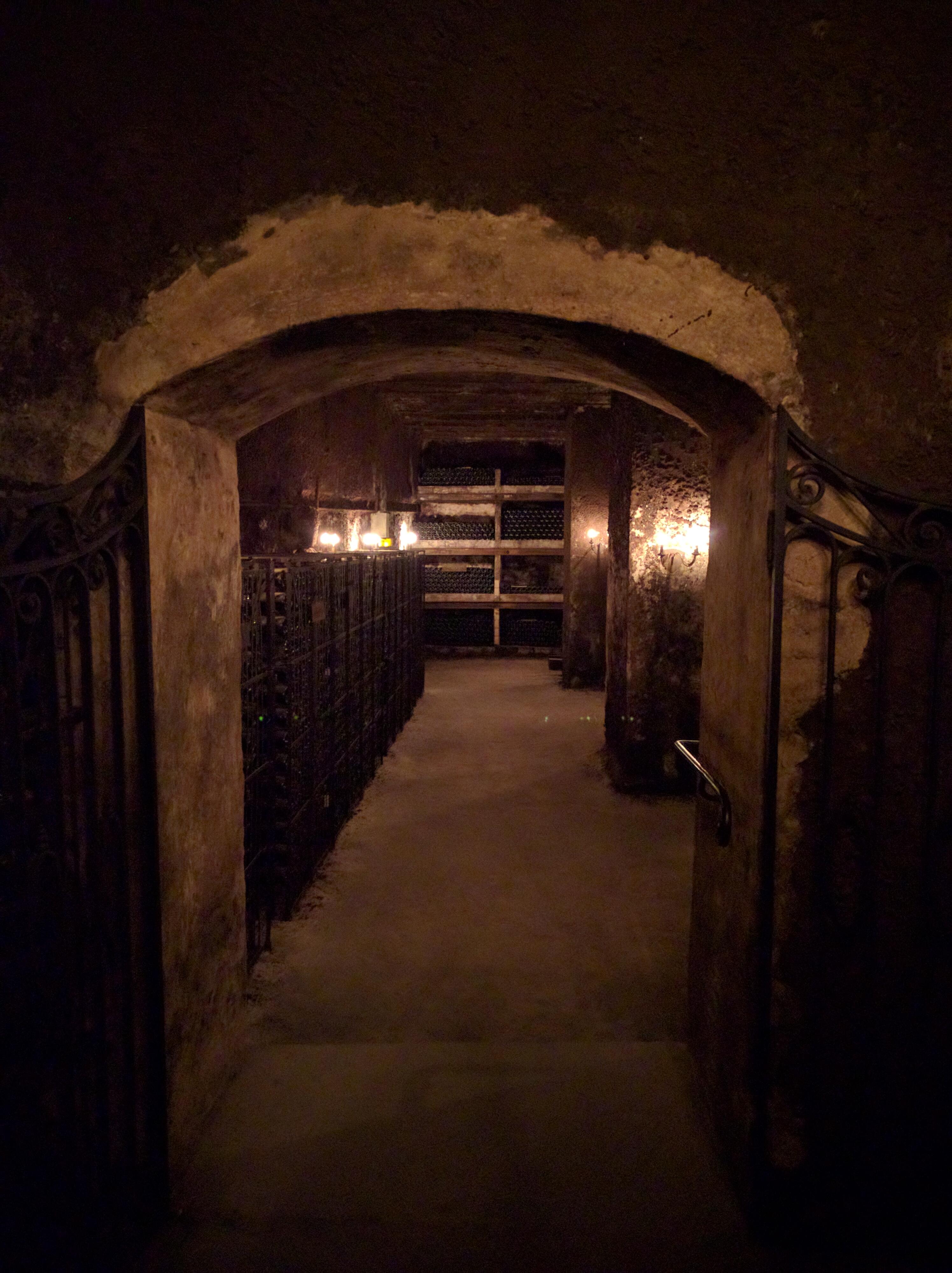
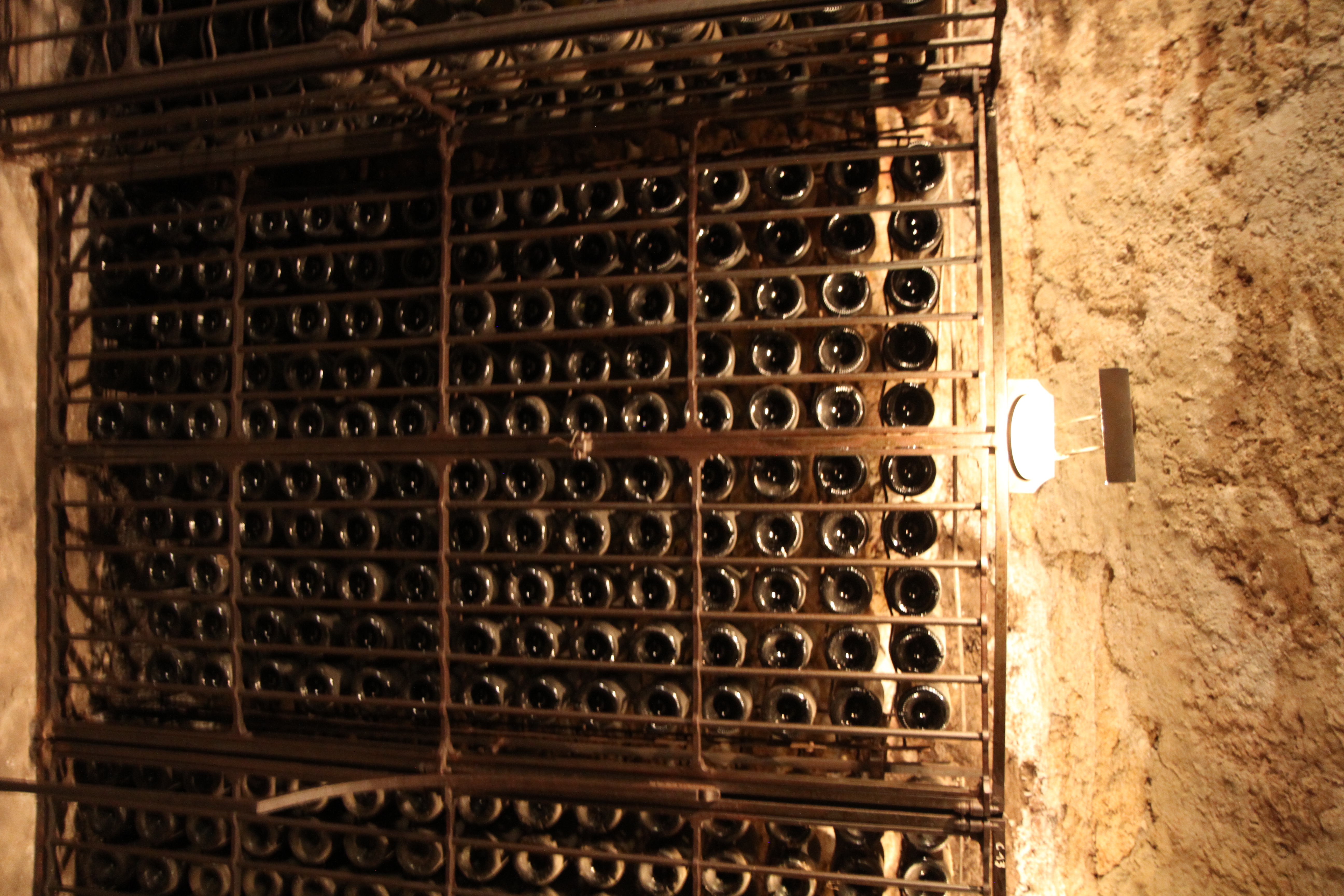
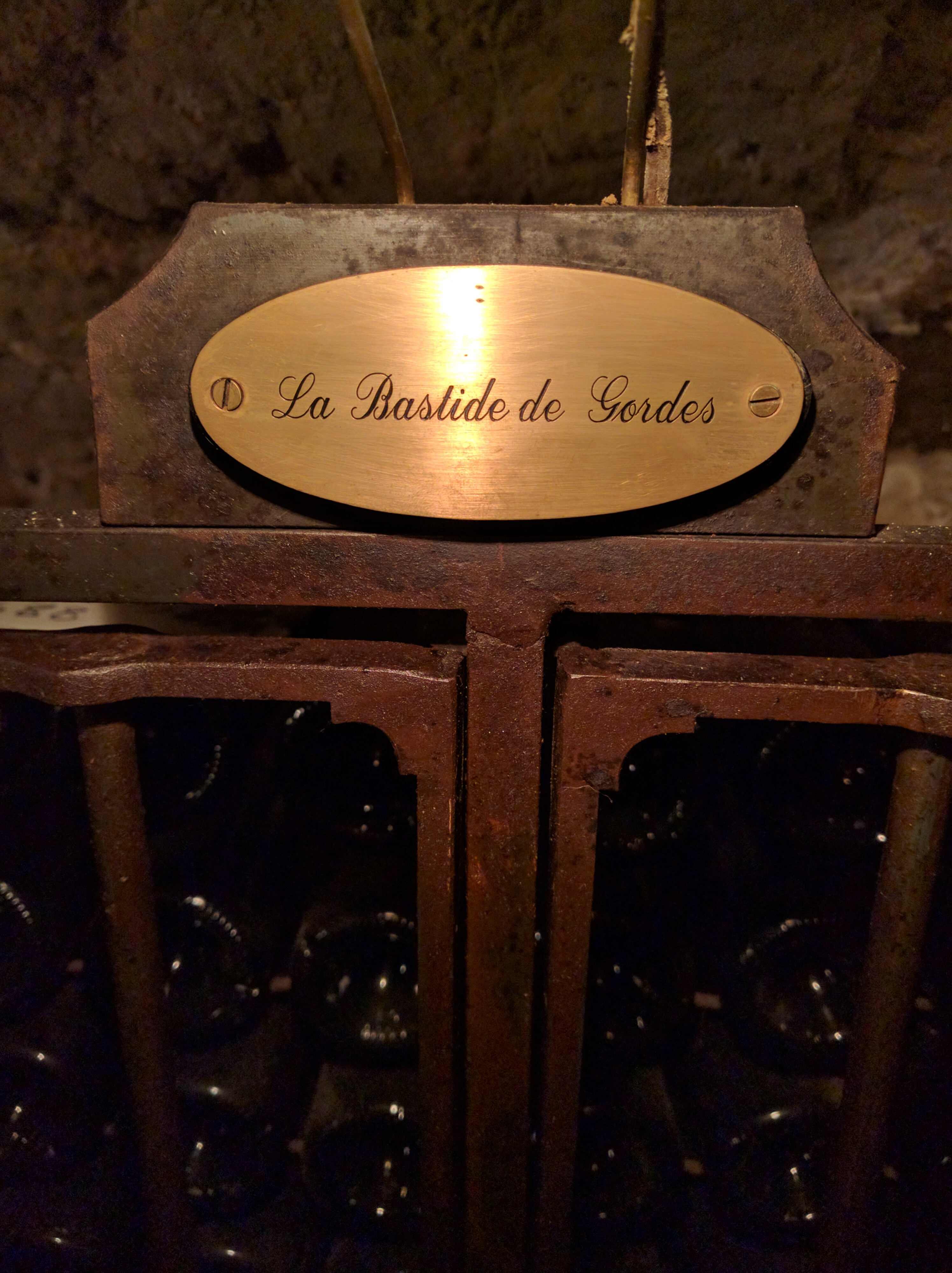
One interesting fact about the Chateau La Nerthe property: it was used as an area headquarters by the Germans during WWII. The chateau is big enough to house a number of people, and the property has a water source. After finishing up at Chateau La Nerthe, we drove a ways to hit another appellation in the area: Gigondas.
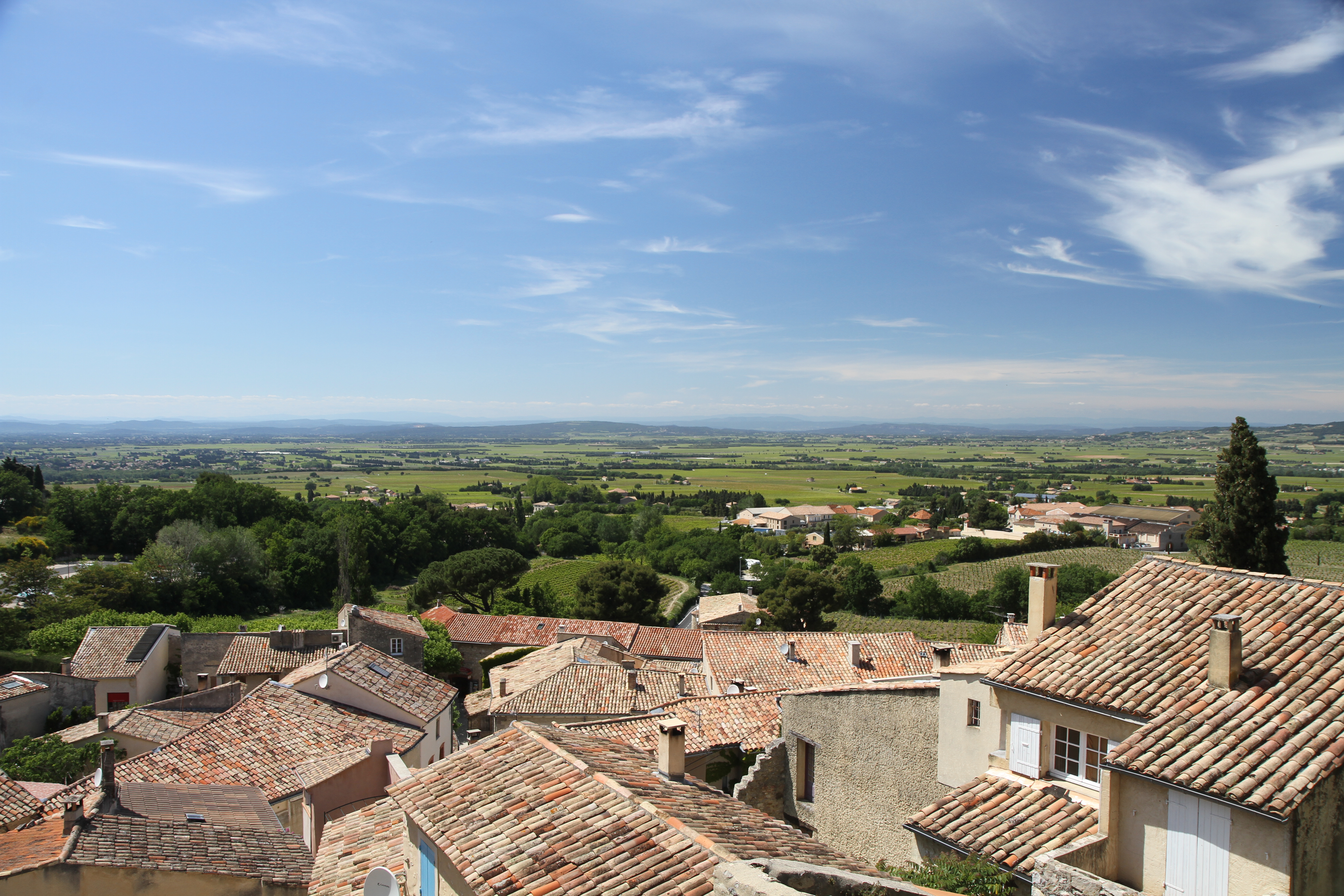
One nice thing about visiting Gigondas is that a store in the town square (which is cute and rife with huge trees)
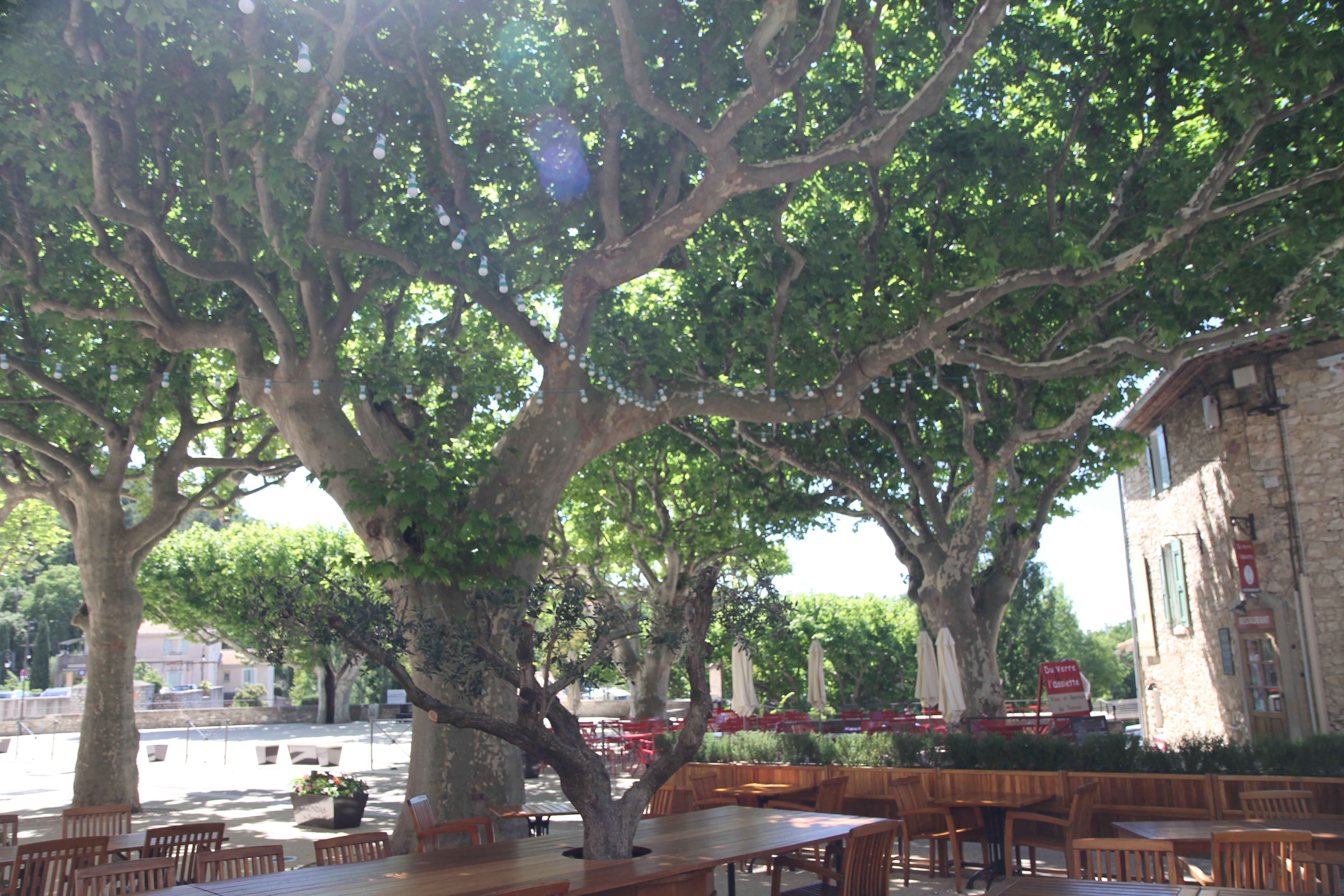
is some sort of cooperative that draws from every producer in the area, which is ~80 vineyards. I believe the woman behind the counter said there were 75-80 vineyards and ~130 wines amongst them, and they were all available for tasting in this location. We went ahead and picked 3 of them to taste, getting some suggestions from Romain on favorites he’d liked in the past.
For the end of our day, we went to another nearby area, Beaumes-de-Venise, to Domain de Coyeux. They produce a Beaumes-de-Venise (another similar GSM blend) and a little bit of Gigondas (they have a small plot within Gigondas), as well as the other type of wine that Beaumes-de-Venise is known for: muscat. Coyeux was very pretty: it’s basically on the side of a mountain, with some of the vines planted on terraces.
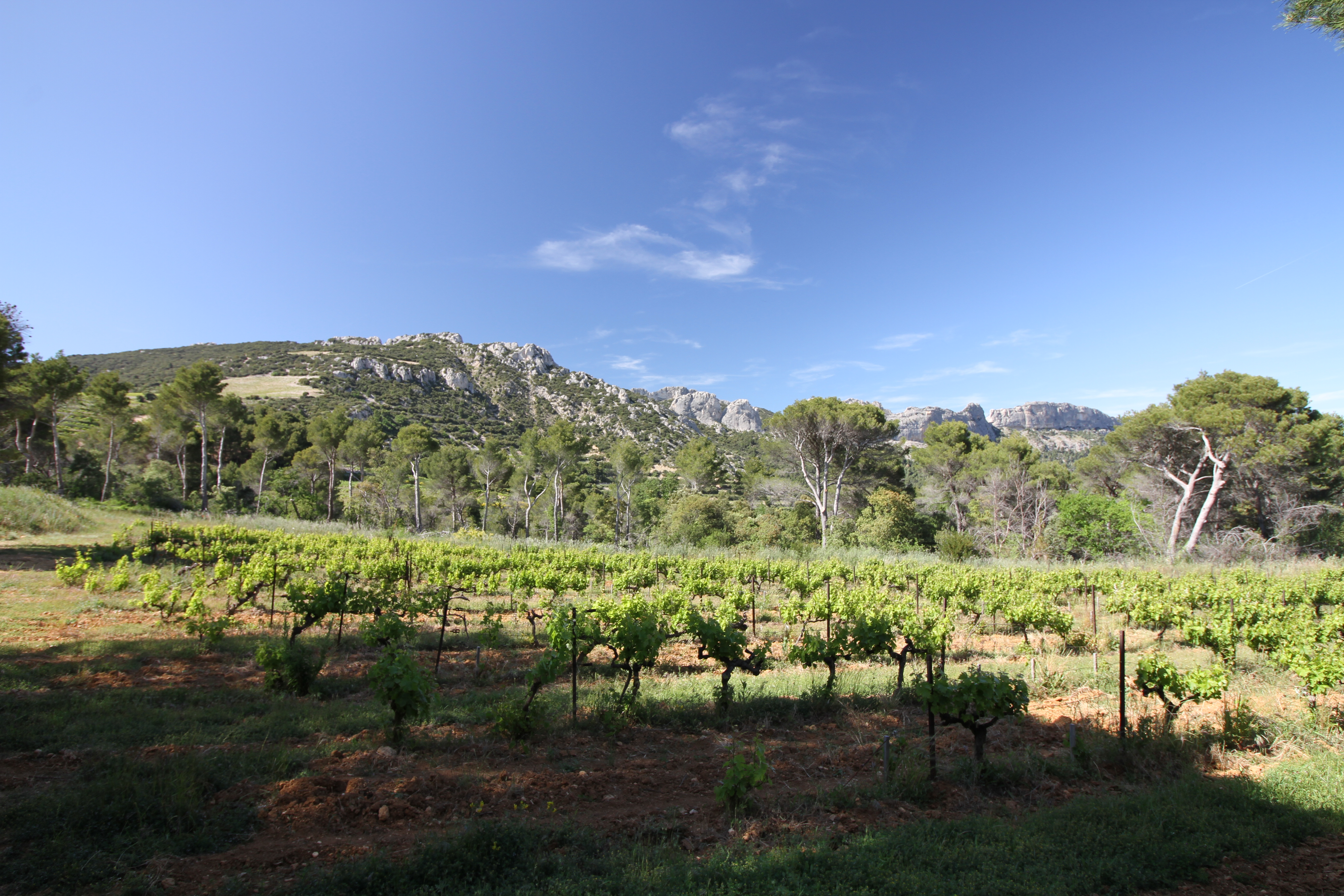
One famous landmark that is visible throughout this area and is well known to cycling fans: Mont Ventoux (aka ‘The Giant of Provence’), which is the highest point in Provence and whose ascent frequently figures into Tour de France routes. I was able to zoom in from Coyeux and make out the tower at the top of Ventoux:
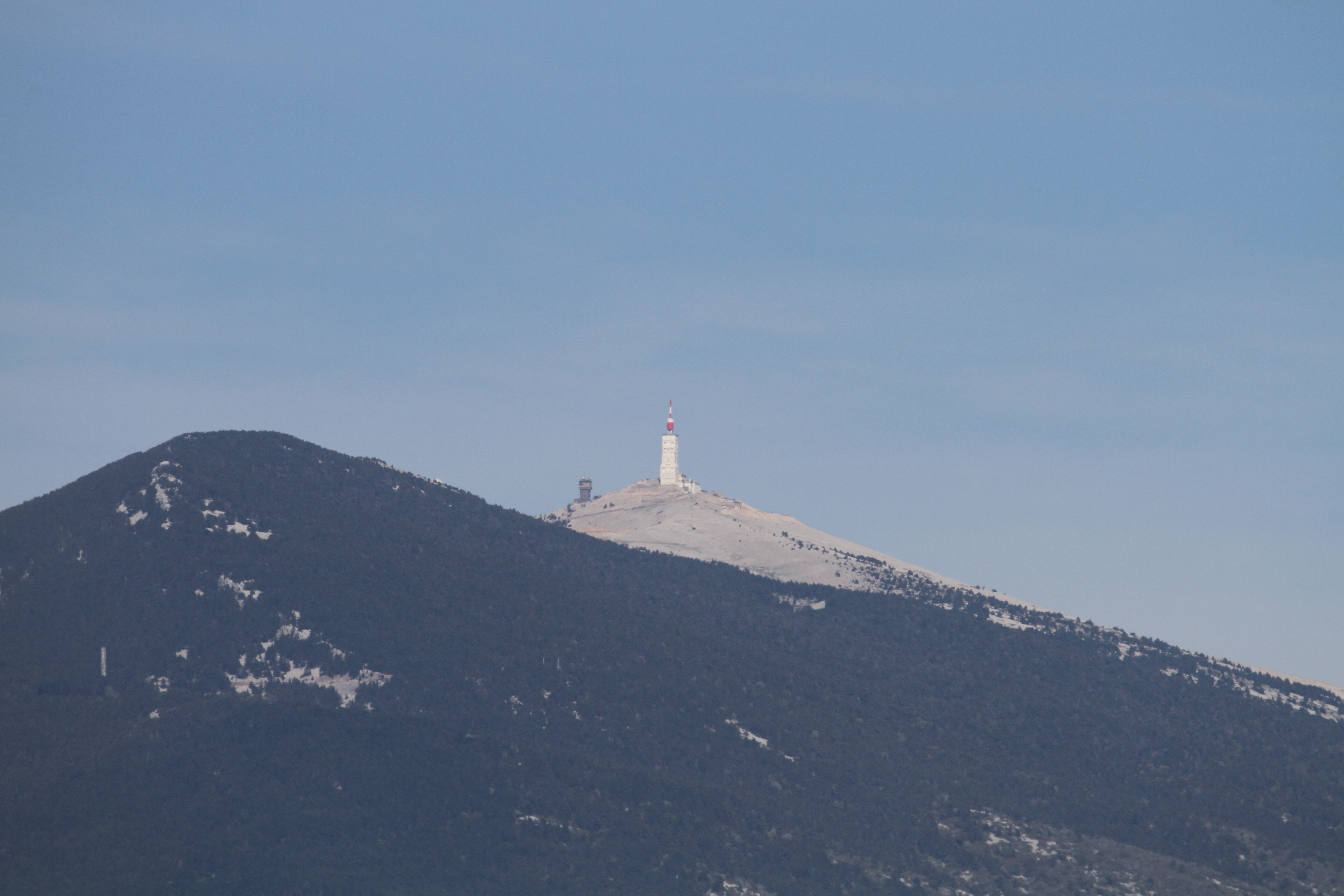
After this, it was about 5 PM, and time for us to head back to Avignon (about a 45 minute drive). It was definitely a jam-packed day, and there is no way we would have seen and done nearly as much had it been Kelly and I on our own. It was nice to just sit back and relax for the ride home, not having to deal with driving or figuring out how to get back. There are so many producers in the area…maybe we’ll be fortunate enough to do another day like this one day!